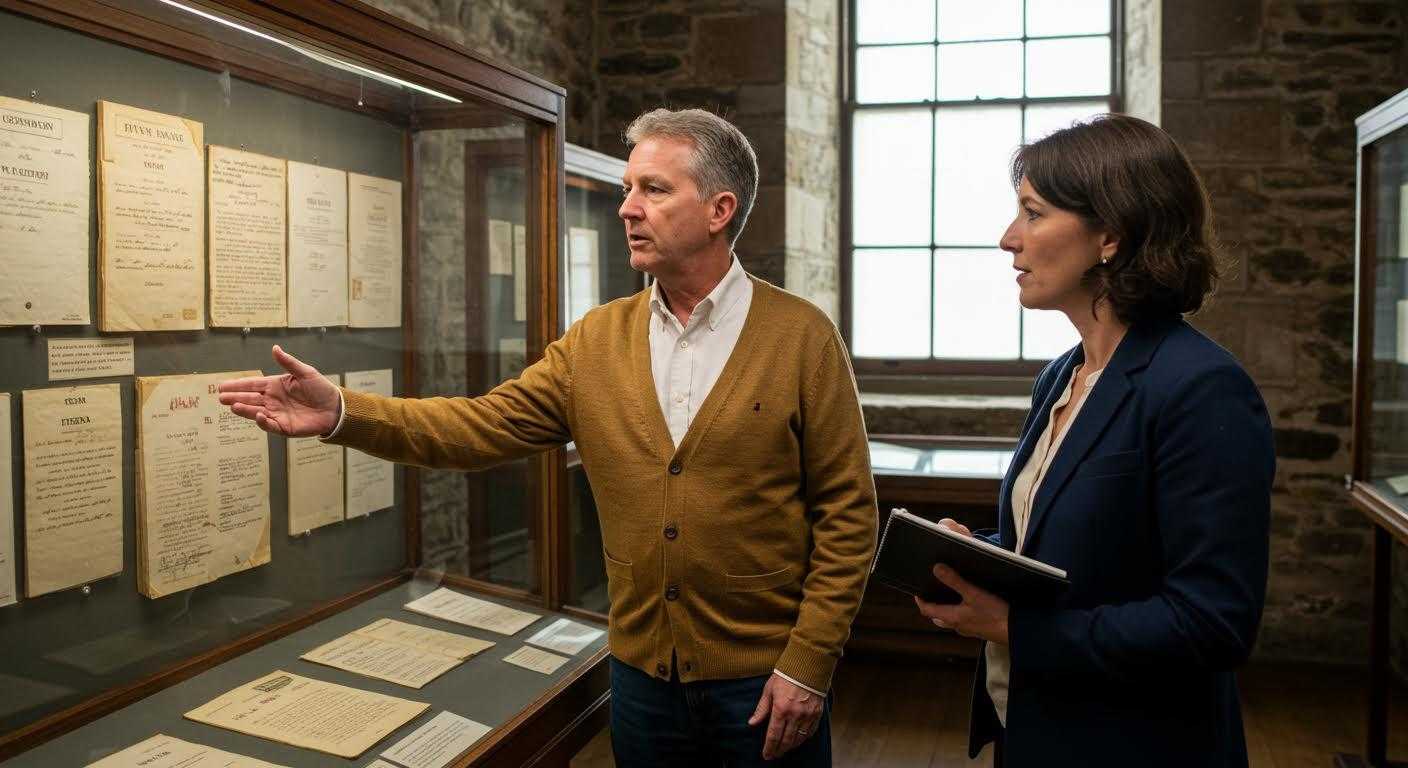Morning mist clings to Hudson River stone walls where Old Sparky once ended 614 lives. The Sing Sing Prison Museum opens its doors without fanfare or gift shops. While 65 million tourists photograph Times Square thirty miles south, Ossining’s 27,000 residents quietly preserve America’s most controversial execution history through exhibits they refuse to sensationalize.
The Museum Ossining Built to Preserve, Not Sensationalize
The historic Olive Opera House houses 1,500 square feet of gallery space. No electric chair replicas dominate the entrance. No true-crime merchandise lines the walls.
Instead, Executive Director Brent Glass emphasizes education over exploitation. “We’re not going to focus on the electric chair,” explains Assistant Director Amy Hufnagel. “We’re focused on prison reform.”
The museum’s board committed to challenging visitors toward equitable justice systems. This approach costs them Instagram followers but preserves authentic criminal justice dialogue. Local codes protecting historical dignity remain unbroken here.
What Locals Guard: Authentic Criminal Justice History
The 1825 cell block constructed by prisoners themselves tells stories beyond sensational headlines. Original stone walls bear witness to two centuries of incarceration evolution.
The Power House’s Cold Engineering
The 1930 Art Deco powerhouse awaits renovation for expanded exhibits. Technical specifications of execution apparatus remain documented without gratuitous detail. Voltage records exist alongside judicial context.
Stories Beyond Julius and Ethel Rosenberg
Reverend John Luckey’s tenure from 1839-1865 emphasized humane discipline over harsh punishment. His documentation reveals how political winds shifted correctional philosophy. Reform rarely follows linear paths.
The museum examines broader questions about punishment’s purpose in society. Why do we incarcerate? What alternatives exist? These conversations matter more than death chamber spectacle.
Walking Through Exhibits Tourists Never Photograph
Visitors encounter oral history recordings instead of electric chair selfie opportunities. Former guards’ families share memories spanning generations of corrections work.
Cells and Historic Artifacts Without Sanitization
Original prison correspondence and guard equipment display humanity within harsh systems. Touchable history connects visitors to individual experiences rather than abstract statistics. The museum protects inmate dignity while acknowledging systemic failures.
Local Voices: Descendants and Witnesses
Community memory preservation drives programming decisions. Ossining residents who remember the 1950s-60s executions contribute testimonials. Their stories anchor exhibits in lived experience rather than voyeuristic fascination.
The museum collects marginalized voices through ongoing oral history projects. These narratives challenge visitors beyond surface-level true-crime entertainment.
The Silence Between Execution and Instagram
Hudson River views from prison grounds juxtapose natural beauty with institutional brutality. Ossining chose preservation over commercialization when development dollars beckoned.
The village received $10 million in Downtown Revitalization Initiative funding during 2021. Rather than building prison-themed attractions, leaders invested in thoughtful historical interpretation. Sacred spaces require respectful protocols that mass tourism destroys.
This approach attracts fewer visitors than Alcatraz’s 1.5 million annual tourists. Ossining residents prefer authenticity over attendance numbers.
Your Questions About This Execution Chamber Still Has the Electric Chair on Display Answered
How do I visit without appearing voyeuristic?
Metro-North trains from Grand Central Terminal reach Ossining in 50 minutes for $15-20. Visit during weekday mornings when educational groups aren’t present. Photography restrictions preserve dignity over documentation.
Why doesn’t Ossining capitalize on true-crime tourism?
Local philosophy prioritizes historical education over entertainment value. Small communities protect heritage authenticity against commercial exploitation. Community resistance prevents “dark tourism” commodification.
How does this compare to Alcatraz or Eastern State?
Donation-based admission contrasts with Eastern State’s $19.95 or Alcatraz’s $45.30 tickets. The 1,500-square-foot space focuses specifically on capital punishment evolution rather than general prison experiences. Fewer crowds enable deeper contemplation.
The last train to Grand Central departs Ossining at 10:47pm each evening. Through windows, Sing Sing’s stone walls fade into darkness without floodlit drama or commercial spectacle. Nineteenth-century limestone holds stories Ossining refuses to sell.
